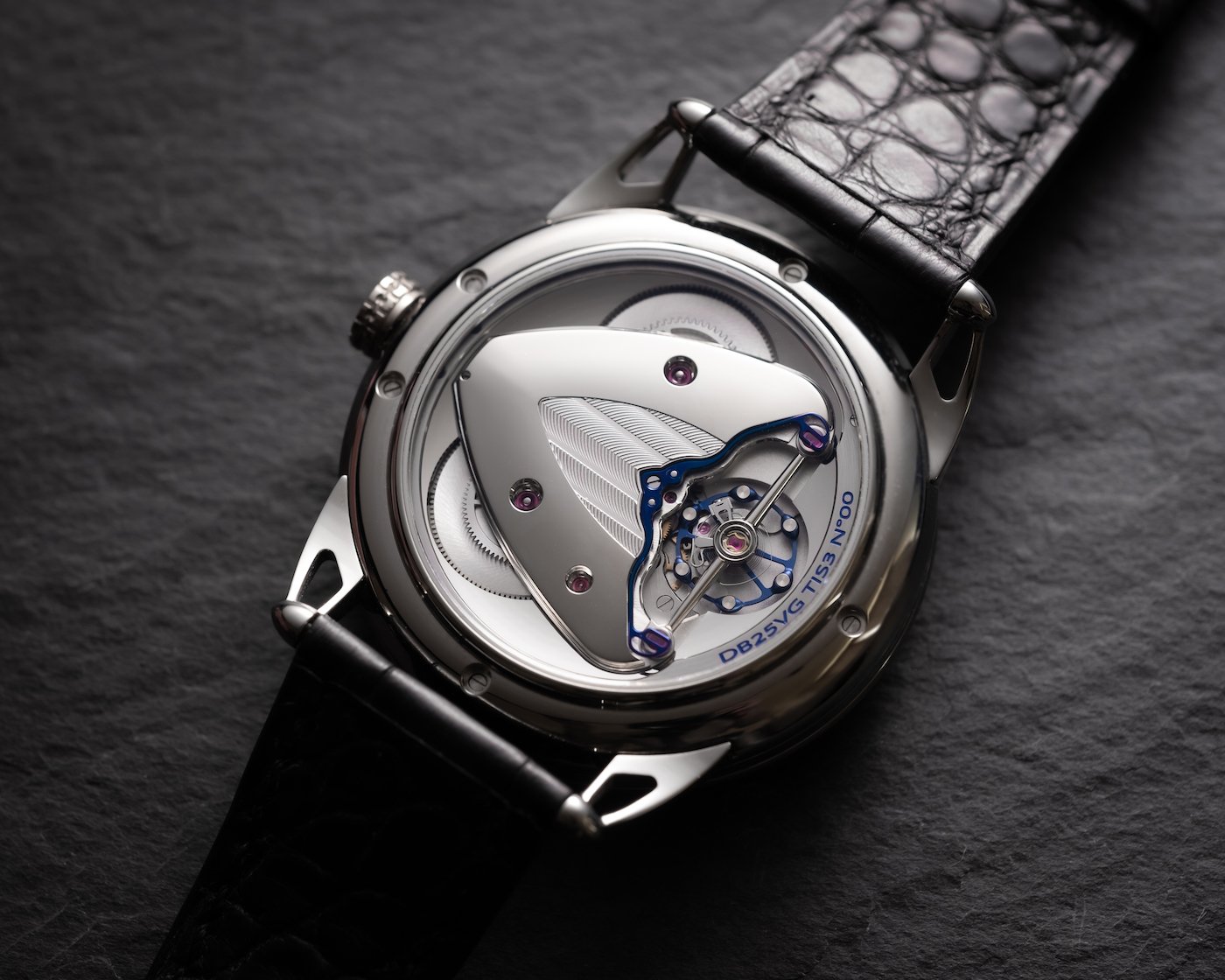ith the release of its 29th in-house calibre, De Bethune is combining its traditional expertise with cutting-edge technology to integrate the first-ever complication into the heart of an emblematic timepiece: the DB25 Starry Varius.
The new DB25GMT Starry Varius does indeed offer a simple and effective way to stay connected through time by indicating the time zones. “What on earth was I thinking of in working on a new GMT travel watch while all the countries of the world were entering lockdown? I am pleased that it is now finished and that all the nomads of the planet can finally resume their journey, doubtless with a different view of our world,” expressed Denis Flageollet, Founder and Master Watchmaker of De Bethune.
Incorporating all the inherent codes of the DB25 Starry Varius collection, namely a polished grade 5 titanium case with a 42 mm diameter, a starry sky accompanied by its Milky Way, perfectly integrated openworked lugs, and a screw-down sapphire caseback providing a glimpse of the movement, this new adaptation of the DB25 World Traveller has everything it takes to win over its future owner.
Despite housing such a complicated movement, it is nonetheless slim and elegant on the wrist, even reinforcing the already greatly appreciated characteristics of the DB25 Starry Varius. Its user friendliness and the smooth setting of the GMT movement make it an intelligent and remarkably beautiful watch.
Starting from the centre, the dial indicates the date on the first disc with the help of its jumping date hand, which can be adjusted via a corrector at 6 o’clock. The hours of the first 24-hour time zone (home or reference time) are marked by the microsphere in a mysterious manner, as it appears to be floating weightless in its corridor. This function can be set in both directions (clockwise/counter-clockwise) via the crown.
Local time, i.e. the second time zone, is indicated by the blued hands whose curvature follows the relief of the dial. The minutes hand naturally remains coordinated with the reference time, while the hours hand indicates the local time thanks to the second time zone. Local time can also be set by the crown, in both directions.
Despite its complex construction, this mechanical GMT movement is very simple to use, with concentrically arranged functions. First of all, the owner uses the crown to set his reference time, known as home time, which is indicated by the microsphere on the 24-hour dial.

Representing De Bethune’s technical signature since its development of the three- dimensional moon-phase display, this microsphere indicates day and night thanks to its two halves: one blue and the other pink. It gradually turns at 6am and 6pm, thereby imitating sunrise and sunset. Secondly, the wearer sets his second time zone by means of the hours hand which is controlled via the crown pulled out to the second position.
In the centre of the curved dial, De Bethune offers us a poetic vision of our sky by day and by night. A polished pink gold sun in the centre of a microlight shines over half the disc, while the celestial vault is delicately outlined on the blued polished titanium section. The vision provided is of a miniature night sky, dotted with a multitude of small white gold pins delicately and individually driven into a blued titanium dial. The Milky Way is then hand-crafted using micro laser strokes and 24-carat gold leaf.

Visible through the sapphire caseback, the reverse side of the movement reveals the latest titanium balance with white gold inlays. This organ has the ability to neutralise the effects of temperature variations thanks to its interaction with the balance spring featuring the “De Bethune” flat terminal curve. Its aerodynamics have also been worked on so as to ensure minimal air resistance. The escape-wheel is made of silicon both for the lightness of the material and to increase the power of the calibre.
The regulator is held in place by a triple pare-chute system which combines a titanium bridge integrating two jewels held in place by a leaf-spring system pressing on the jewels. The two barrels, which are partially visible, have a five-day power reserve thanks to a self- regulating energy mechanism.
While simple and beautiful in appearance, this timepiece nevertheless conceals a mechanical treasure, since it is equipped with the latest hand-wound Calibre DB2507. This is the 29th movement from De Bethune, which once again demonstrates bold technical mastery and expertise by fitting a GMT movement into a Starry Varius case and reproducing a miniature starry sky.












